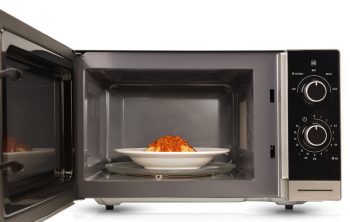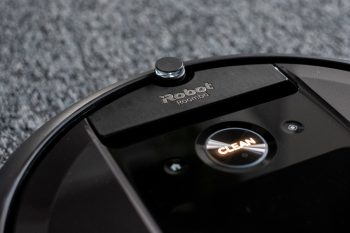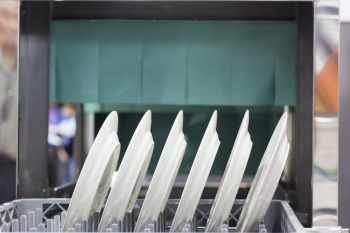
When it comes to heating up our favorite bowl of soup, the microwave is often our go-to appliance for its convenience and speed. However, microwaving soup can sometimes lead to messy splatters and uneven heating if not done properly. Covering the soup while microwaving is a simple solution to these problems. In this article, we will delve deep into the various methods of covering soup in the microwave, the materials to use, and the potential hazards of not covering your soup.
Covering soup in the microwave can be done using microwave-safe materials such as a microwave-safe plastic cover, a ceramic plate, a wax paper, a paper towel, a glass lid, or a silicone food cover. This prevents splattering and ensures even heating of the soup. It’s also important to stir the soup a few times during the heating process to promote even heat distribution.
The Importance of Covering Soup in the Microwave
Covering soup when microwaving it serves several purposes. Firstly, it ensures even heating by circulating the heat inside the microwave. Secondly, it prevents the soup from splattering and creating a mess inside the microwave. This reduces the need for frequent cleaning and maintenance of the microwave. Lastly, using a cover helps to hold in moisture, providing safe and even heating, which can improve the texture and taste of the soup.
Potential Hazards of Microwaving Soup Uncovered
Microwaving soup uncovered can lead to several potential hazards. These include uneven heating, splattering inside the microwave, and the risk of the soup exploding due to steam buildup, especially if the soup contains fat or liquid. To minimize these risks, it is recommended to use a microwave-safe container, heat the soup in short intervals, and stir frequently to promote even heat distribution.
Safe Materials for Covering Soup in the Microwave
When choosing a cover for microwaving soup, consider using microwave-safe materials such as microwave-safe plastic covers, ceramic plates, biodegradable wax paper or paper towels, glass lids, or silicone food covers. Always ensure that the materials you use are labeled as microwave-safe to avoid any potential hazards or contamination.
Techniques for Covering Soup in the Microwave
There are several techniques to cover soup in the microwave to prevent spills or splatters. These include using a microwave-safe plastic cover, a damp paper towel, a microwave-safe bowl with a matching lid, a commercially made microwave splatter cover, or a plate. Remember to stir the soup several times during the cooking process to promote even heating and minimize hot spots, which can lead to splattering.
Influences of Microwave Wattage on Covering Soup
The wattage of a microwave influences the covering process of the soup by affecting the cooking time and the heat distribution. Higher wattage microwaves cook food faster and may require extra care to ensure the covering stays in place during the cooking process.
Effect of Covering on Nutritional Value and Taste
Covering soup in the microwave can affect its taste and consistency, but it generally does not have a significant impact on its nutritional value. When you cover food in the microwave, it helps retain moisture and steam, which can lead to more even heating and better taste.
Alternative Methods to Microwaving Soup
If you don’t have a suitable cover for microwaving soup, there are alternative methods to heat it up. These include heating the soup on the stovetop, in the oven, using a double boiler, a crockpot or slow cooker, a steamer, or a portable food warmer.
Using Paper Towels to Cover Soup in the Microwave
Yes, you can microwave soup with a paper towel on top. Using a paper towel to cover the soup can help prevent splattering and keep your microwave clean. Most paper towel brands are safe to use in the microwave. However, it’s always a good idea to check the packaging and the manufacturer to make sure your specific brand is microwave-safe.
In conclusion, covering soup in the microwave is an essential part of the heating process. It ensures even heating, prevents splattering, and can enhance the taste of the soup. It’s important to use microwave-safe materials and techniques for covering the soup, and to be aware of the potential hazards of not covering the soup. Whether you’re using a microwave-safe plastic cover, a damp paper towel, or a microwave-safe bowl with a matching lid, covering soup in the microwave can make your meal prep easier and cleaner.
Frequently Asked Questions
Can I use aluminum foil to cover my soup in the microwave?
No, you should not use aluminum foil in the microwave. This is because microwaves cannot pass through metal, and the foil can cause arcing or sparking which can damage your microwave or even cause a fire.
How long should I microwave my soup for?
The exact time can vary depending on the wattage of your microwave and the quantity of soup. However, a good starting point is to microwave the soup for 2 minutes, stir, and then continue to heat in 30-second intervals until the soup is heated to your liking.
Why does my soup explode in the microwave?
Soup can explode in the microwave due to buildup of steam inside a covered container. To prevent this, always use a vented microwave cover or leave a corner of the cover slightly open to allow steam to escape.
Is it okay to microwave soup in a plastic container?
Yes, but only if the plastic container is labeled as microwave-safe. Some plastics can release harmful chemicals when heated, so it’s important to only use containers that are specifically designated as safe for microwave use.
Can I reheat soup multiple times in the microwave?
It’s generally safe to reheat soup multiple times, as long as it reaches a temperature of at least 165°F each time to kill any potential bacteria. However, for the best taste and texture, it’s recommended to only reheat the amount of soup you plan to eat in one sitting.












